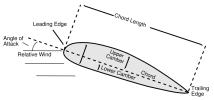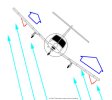Nice. What were the may scores if I might ask?
My original scores were 6/6/5/51 and my retest scores are 8/8/7/63.
Nice. What were the may scores if I might ask?
I've already been an active person since I got out of the Air Force, but usually focus on free weights as opposed to cardio. Over the summer I began running again, going on two mile runs to build my endurance back up. I have two dance classes for my final semester and that has been my "cardio" for the fall. After I am officially done with school (and hopefully selected by then) I plan on running three days a week for three miles each time to get extra prepared. The last time I timed myself I did about a 10.5 minute mile and a half run, so I feel pretty good.Is anyone doing workouts now to prepare for OCS?
Just curious what everyone else is currently doing.
Is anyone doing workouts now to prepare for OCS?
Just curious what everyone else is currently doing.
I'm currently doing three sets of push ups and sit ups alternating days:
Monday, Wednesday and Friday I do three sets of as many push ups I can do in two minutes followed by an hour of cardio. (typically walking at max incline keeping my heart rate above 150, maybe a slow jog.)
Tuesday and Thursday I do the three sets of sit-ups followed by an hour of cardio.
I know it's cardio heavy, but I have lost about 45 pounds to get to 220 in order to pass MEPS and have about 10 pounds to go to meet the weight requirements for a 74 inch height. My waist circumference does meet the 39 inch standard, but Im curious if this will count at OCS- I would rather be safe than sorry.
A lot of running right now. Probably more than I’d care to, honestly. I’ve been battling some scapular dyskinesis (scapular winging) the past couple weeks so I have not done much upper body lifting, just strengthening exercises for the scapula and rotator cuff muscles.
WARNING: Unsolicited advice from an internet stranger below. Proceed at your own desire.
Look into a technique called “grease the groove,” for the pushups in particular. Basically you do a submaximal (~50% of max reps in this case) set throughout the day/workout session. In short, it allows you to reach a greater number of total reps, which really is what you’re looking for. This really works well if you do it throughout the day. Every hour push out 10 - 15 reps, it doesn’t need to be much. I’ve done this with pull-ups - just a personal experiment, if you will - and saw some real results in a short time.
Also, I’d probably add in a sprint interval workout and an aerobic cardio session. Maybe replace a couple of the 1 hr tempo-type of cardio sessions with them. Basically there’s 3 (technically 4, I believe) energy systems you’re body uses. One is used at low heart rates (aerobic), one at near max heart rates (~>90% of max hr), and one in the range you’ve really been working. To maximize your performance, all 3 systems need to be “on point.” You might think this is overkill, but r/navyseals on Reddit has some real good info on this and they explain it MUCH better than I could.
Awesome work on shedding the lb’s! That’s not an insignificant amount of weight.
I second the advice to scatter the upper body training throughout the day for pushups and sit-ups (sit-ups are now probably a plank?). This is an effective method to increase total output in a timed event. I and many others in my unit used this method, it is highly effective for PRT prep. Circuits are good, 1/4mi run, pushups and sit-ups, 1/4mi run, pushups and sit-ups, repeat. Doing a circuit like that will probably highlight weak areas that one needs to address.
My plan is to build up to 2 miles per day over the next couple months. I just recently read on the forum that people suggest running two miles a day to get ready for OCS. People have reported running up to 9 miles a week at OCS... I.E. 2 miles on Monday, 2 miles on Wednesday, 5 mile group run on Friday at an 8 minute mile pace, etc. If you're not a stellar runner, running is by far the most difficult and time consuming category to decrease time/increase points. To avoid injury, running needs to be increased no more than 10% in distance or speed every week.
I would strongly encourage running on concrete if you're not already doing so. From what I've heard we don't run on a track, so get your legs ready for the extra impact by running on hard surfaces. Many reports of shin splints and stress fractures from individuals running exclusively on a track to then go to OCS where they run on concrete. You need to be very careful switching to concrete, listen to your legs and don't over-train for the sake of maintaining a running schedule. If you get stress fractures, that's a 6-month time frame of no running.
Absolutely, thanks for throwing that in!As a side note, I'd highly recommend learning good running form before committing to a high volume schedule.
I made the mistake of just assuming I knew how to run then going out and running 1-3 miles a day on concrete. I got a bunch of back and knee pain and it just overall sucked. Running with good form helps you avoid injuries and also makes running way easier and enjoyable since you're working most efficiently.
A symmetrical wing cannot produce lift with a zero AoA. Asymmetrical wing, yes. Symmetrical, no. That answer is incorrect.Hey random question for all you guys, I'm continuing to study in the event I need to retest:
AoA is the angle between relative wind and the aircraft wing's chord line. I've seen some study guides have questions on this and one particularly irked me:
"Does a symmetrical wing with 0 AoA produce lift?"
A symmetrical wing cannot produce lift with a zero AoA. Asymmetrical wing, yes. Symmetrical, no. That answer is incorrect.
Yeah, it's a little bit annoying when you come across really simple concepts that are outright wrong lol. I found several in the guides I've had over the years.Guessing the author was assuming a level attitude with symmetrical wings having some AoA due to wings naturally angling up. Spoke to one of my engineering relatives and he told me that in engineering there can be a discrepancy between AoA when referred to against fuselage (incidence + normal AoA) or the standard Pilot AoA (wind actually hitting the wing).


You can get pretty technical and you understand the concept, but perhaps if some readers here do not;
When you say naturally angling up I'm assuming you're referring to Dihedral?
